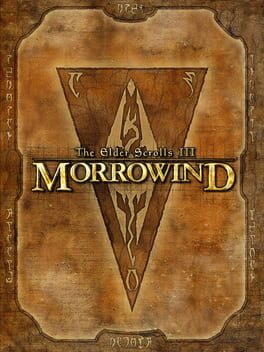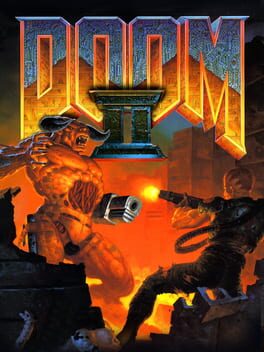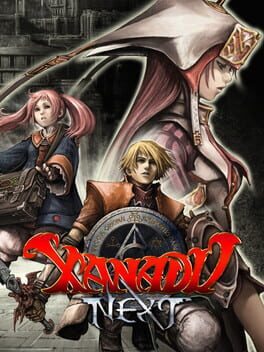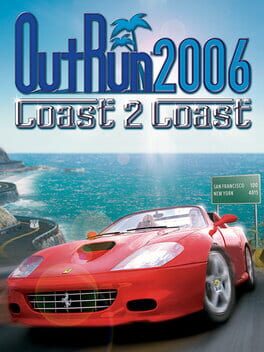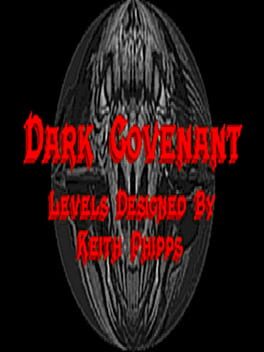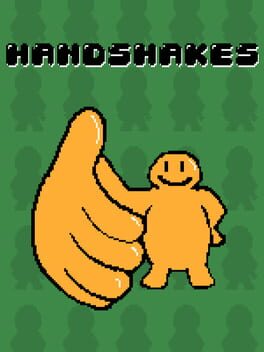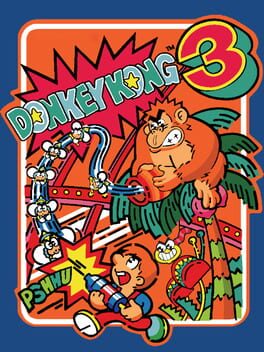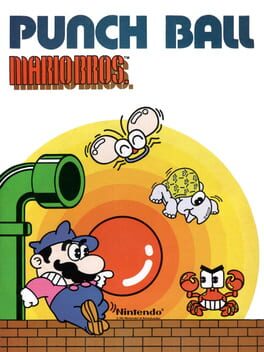PasokonDeacon
💾Bubble-era cannonball
boy🖥️ (pls comment on lists/reviews, I don't bite)
I play just about everything, but especially Japanese, Korean, & Chinese PC games which the West has overlooked or underappreciated. These range from the turn of the '80s to current day, from classics to kusoge, spanning the earliest JRPGs to the most experimental visual novels. Every month I like to hop between the decades, reviewing games across the medium's history.
If you're interested in classic Japanese PC (J-PC) games specifically, I cover them on Twitter & soon on my website/YouTube channel. You can hang out with me & other East Asian PC enthusiasts on our public Discord server, too: https://discord.gg/CaDGX9AXyC
Badges

1 Years of Service
Being part of the Backloggd community for 1 year

Organized
Created a list folder with 5+ lists

GOTY '23
Participated in the 2023 Game of the Year Event

Treasured
Gained 750+ total review likes

Pinged
Mentioned by another user

Listed
Created 10+ public lists

Famous
Gained 100+ followers

Full-Time
Journaled games once a day for a month straight

Adored
Gained 300+ total review likes

Trend Setter
Gained 50+ followers

Loved
Gained 100+ total review likes

On Schedule
Journaled games once a day for a week straight

Well Written
Gained 10+ likes on a single review

Gone Gold
Received 5+ likes on a review while featured on the front page

Shreked
Found the secret ogre page

Busy Day
Journaled 5+ games in a single day

Popular
Gained 15+ followers

Liked
Gained 10+ total review likes

Epic Gamer
Played 1000+ games

Elite Gamer
Played 500+ games

Roadtrip
Voted for at least 3 features on the roadmap

Donor
Liked 50+ reviews / lists

Best Friends
Become mutual friends with at least 3 others

Noticed
Gained 3+ followers

Gamer
Played 250+ games

N00b
Played 100+ games
Favorite Games
1633
Total Games Played
050
Played in 2024
11870
Games Backloggd
Recently Played See More
Recently Reviewed See More
Our tale begins further back than the original Donkey Kong, however, as this sequel owes much more to Nintendo's ill-fated vertical shooters of the time, particularly Radar Scope and Space Firebird. Both ancestors offered technically competent but uninteresting variations on the ubiquitous Space Invaders formula. To the latter's credit, the developers had a solid grasp on sound and graphical feedback by this point, with players feeling that crunchy impact while mowing down alien hordes. But the lack of risk-reward features like the degrading shields in Taito's game, or the cleverly evolving raid and bullet patterns of Galaga a bit later, meant that these post-Sheriff shooters were just too spare and derivative to stand out. I can definitely see why Nintendo's last attempt to break into the shooter market went for a mix of platforming, puzzling, and blaster action. And they would have had a winner if not for some critical problems in the pernicious primate's latest title.
The dastardly donk's back at it again…in a greenhouse? I suppose it's better than Congo Bongo's colonialist chase through the jungles. Genyo Takeda and Shigeru Miyamoto help provide the customary trappings of an early-'80s Nintendo arcade release, with fairly responsive controls accompanied by a very readable set of graphics. I rarely struggle to figure out what's happening on-screen even way late into a playthrough, and the SFX ring clearly in my ears. Nothing here feels like an evolution beyond Donkey Kong Jr., though. The likes of SEGA and Namco were already starting to produce more audiovisually stimulating stuff like the former's DK clone and the latter's Mappy. Also lacking here is much of the series' humor—the most I can recall is my amusement whenever DK gets his head stuck in the beehive. It's a rather sober outing for not-Mario vs. not-Kong, contrary to expectations that these developers had previously set. I'd be fine with all this if the game design itself was strong, but, well…
Simply put, the game's a bit too easy, with its difficulty level evolving mainly from faster attacks and a few additional enemy types. Our protagonist Stanley may have a measly little pesticide pump to work with, but the admittedly clever goal of scaring DK to the top means it's possible to ignore the bugs and just go for broke. Arguably the most fun I can have with Donkey Kong 3 is exactly that: speedrunning each board to get as high a time bonus as possible, ensuring I can regularly extend my lives. That sounds fun on paper; now imagine this game throwing you a frequent gun power-up which trivializes combat entirely. Sure, you have to actually lose a life for the upgrade to reappear, and there's still some hits on DK to go before it tumbles. But the relative ease of getting 1-ups via fast stage clears means it's often too easy to get this item. One has to play several stages before there's much threat of bees successfully stealing away with your flowers…which means perfect bonuses become a formality rather than a reward. Combine all these flaws and we've got a game loop which struggles to encourage more skillful play and leads to unsatisfying high-score runs.
The echoes of mediocre starfighting action from Nintendo's pre-Donkey Kong bombs reverberate throughout this final numbered entry, contrary to the heights their R&D teams would reach via many Family Computer releases to come. I feel bad for Genyo Takeda especially since he's so often singled out as the one responsible for playable yet dismal software such as this. To me, it doesn't seem as though releases like this suffered from a lack of foresight, ambition, or no-nonsense design. He later directed the StarTropics games, simultaneously within Nintendo's house style and quite distinct from anything Miyamoto's crew were involved with. (Let's also remember that Miyamoto was involved with Donkey Kong 3, yet the besmirchment's sent elsewhere.) Something managed to go wrong with each and every one of the company's arcade shooters, regardless of circumstances, and it's no surprise that they later played it safe with Solar Striker. If there's anything I'll give Donkey Kong 3 credit for, it's that shooting-heavy action platformers were a rarity in 1983. Add this distinction to the game's brand power and I'm unsurprised that it still sold reasonably well to arcade operators in Japan, no matter the lack of staying power. Still, I'd rather play Moon Patrol; even the best PCBs of '83 struggled to match that one in quality and replayability.
Save for its quick appearance on the Famicom, Donkey Kong 3 fell into footnote status much quicker than the average Nintendo hit of the time, and I attribute that to its shortcomings more than just its small delights. There's still a competent action game in here whenever you're unable to immediately trivialize a stage. I had fun timing my shots to avoid blocking myself with stunned snakes. The way Stanley gets wiped out by an ambush of insects is morbidly amusing. And while it becomes too damn straightforward after 15 minutes, I hardly mind this kind of accessible arcade experience after playing some of the period's more punishing stuff. But in exchange for that ease of completion, I expect way more variation in levels, enemy characteristics, and types of traps to deal with. It's because the game settles for so much less than it promises that I can't help but rate it so low. And as 1984's catalog would show, Nintendo themselves knew that the future belonged to increasingly complex and extensible game loops, even for cartridges as constrained as Excitebike. (Hell, it's a wonder that Takeda's own Sky Skipper gets more retrospective praise than anyone ever expected.) In the end, this gassed-up-the-ass gorilla had reached the end of his usefulness; it would take something altogether new and wild to bring back the beast.
Doom modding in its nascent days amounted to either (a) poking around in hex editors, trying to create a cogent WAD file through trial and error, or (b) wrangling the initial batch of pre-Windows map editors which loved to crash and/or corrupt your hard work! It's a miracle that something as fun, well-paced, and innovative as this map from Leo Martin Lim came together at all. (The other miracle is that levels this old are still preserved in their original archived form, and we have Ty Halderman and his successors in charge of the /idgames FTP archive to thank for that.) All college kids who played some version of id Software's original Doom in its launch days had many ideas for mods, but so little experience and precedent to build from. Lim wasn't even the first to release anything beyond a series of sketchy boxes with monsters and weapons—Invasion…: Level 1 - Contamination beat it to the punch by about a month, replete with special effects and new assets like music and textures. But Doomsday of UAC proved that you could make a similarly cinematic experience using just the base game and a host of magic tricks exploiting Carmack's engine. It helps that this map has solid combat and exploration in its bones, too.
After crawling from the wreckage, you're pressured from all sides by a trickle of imps, pinkies, and shotgunners ready to pounce before you can assemble an arsenal. This prompts a mad dash through a midnight maze of boxes, trailers, and enemy groups one might want to use against each other. We're far from the clean, abstract but believably efficient spaces that Romero designed for Doom's Episode 1…nor is this anything like the trap-driven dungeon crawling one finds in Sandy Petersen's levels. Doomsday of UAC marked the beginnings of what FPS modding circles call "Doom-cute": heavily kit-bashed replicas of architecture and objects like cars, toilets, etc. using only the original game's resources. The tipped-over truck with a spinning wheel looks impressive already, nothing like what id's crew displayed in the shareware and payware episodes. It gets even more exciting when you realize it took a lot of sector geometry manipulation and a well-placed texture animation effect on certain lines for this to function at all! There's just enough breathing room to admire the scenery while gunning down monsters and collecting the necessary ammo and key cards to proceed.
I shan't spoil the rest of Lim's one and only wonder-mod since it relies on a clever twist or two, but just know there's some trickery afoot, creeping up on players as they head further into this corrupted corporate complex. Hidden usable doors guard access to visible yet seemingly unobtainable power-ups. A conference of powerful baddies lies deeper within the offices, guarded by hapless imitations of the salarypeople who once roamed here. Even the bathrooms and parking garage aren't safe! Considering that Lim and other authors also had to build around the Doom engine's strict limits in this pre-source port era, the level of detail and scope in Doomsday of UAC matches and sometimes outdoes OG Doom maps like Mt. Erebus. I don't know that it exceeds the best parts of id's game, particularly Computer Station or Containment Area, but the ingenuity on display here always brings a smile to my face. Best of all, there's never too much going in the player's favor, nor too little. Weapon and encounter balance feels spot on, the secrets are rewarding to find (nor essential to a fault), and the sequencing of incidental combat into traps and back rarely feels awkward.
Doomsday of UAC is still a 1994 FPS mod, though, warts and all. It's very easy to get through for a modern Doom fan, even those who have only played the official games. Texturing and level of detail is mostly sparse aside from the aforementioned set-pieces. The famous "crystal sector" room can just end up feeling gimmicky or frustrating if you haven't kept a backup save ready. Nor is the original Doom's bestiary and set of player options as ideal for these large open spaces as Doom II's equivalents. I've warmed up to the original's emphasis on cacodemons, rockets, and copious cannon fodder thanks to later WADs like Beginning of the End and Doom the Way id Did, but the general experience for early Doom mods can feel underwhelming if you've played anything much newer. The best moment arguably comes right before the end as you deal with an elaborate cyberdemon trap to nab the red skull key, which involves tangoing with barons of hell and lost souls in the process. This would have been an intimidating puzzle for players of that period, and I get a kick out of it now. But in the back of my mind, all I can think is how much crazier I'd redesign this into, using modern tools like Ultimate Doom Builder and such. At least the transition from "invaded office space" to hellscape remains evocative today.
Overall, I'd say Doomsday of UAC more than deserves its lauded spot in the history of DIY world-crafting and FPS fandom. It features prominently on Doomworld, both in its 10 Years of Doom feature, with its close rival Invasion…: Episode 1 unfortunately absent. [1] Lim's mod was further recognized fifteen years later via the site's Top 100 Most Memorable Maps retrospective, the only map predating Doom II's release to rank in the top 10! [2] And if that's the consensus from community veterans, so often locked in debate over what classic mods and maps truly influenced what, then who am I to downplay the quality and significance of this one? Running through the infested UAC corporate park has become a rite of passage for many players seeking entry into the depths of Doom modding madness. I won't deny it seems quaint and clouded by nostalgia nowadays, yet even Romero himself has highlighted this as an example of the game's impact on future developers, if not id Software themselves. [3] The early success of mods like this and Slaughter Until Death paved the way for id (and competing developers) to hire these amateur designers, or simply license community projects like TNT: Evilution for commercial release as shown with Final Doom. My heart goes out to the unsung pioneers like STONES.WAD; it's simply hard to compete with a milestone like this.
[1] Tropiano, Matthew, and Not Jabba. “Top 100 Memorable Maps 10-1.” Doomworld, December 9, 2018. https://www.doomworld.com/25years/top-100-memorable-maps/page10/.
[2] Watson, Mike, and Andrew Stine. “The Top 100 WADs Of All Time: 1994.” Doomworld, December 10, 2003. https://www.doomworld.com/10years/bestwads/1994.php.
[3] John Romero (20 January 2015). "Devs Play Doom." YouTube. Retrieved 21 January 2015.
Punch Ball Mario Bros. is fun enough despite its platform limitations and unwillingness to go farther with its deviations from the source material; it's also a benchmark for the systems it got ported across. Hudson knew how to get the most from their partnership with Nintendo, bringing conversions like this everywhere it made sense. The weaker but cheaper PC-6001? Yep. The graphically powerful but expensive Sharp X1? Why of course! And it's fascinating to see how much the coders wrought from less powerful PC hardware vs. the best of the bunch, too. I was expecting major sprite and color clash going into the PC-6001mkII version, yet it felt hardly less clean and responsive to play than the Sharp PC varieties. (Considering the X1 has its own sprite-ing hardware, its stiff performance had me underwhelmed.) I expected Hudson to struggle with the FM-7's poor keyboard I/O, however, and that bore true.
See, there's a problem afflicting so many FM-7 games, at least the ones reliant on predictable inputs: the system doesn't fully poll keyboard inputs. This means you can tap anywhere on the numpad (or "tenkey") to move a direction and the game will act as if you're holding that down. But while that first input's still active, no further repeats of it are counted; this doesn't enable a soft autofire, basically. FM-7 keyboard play manages to wedge itself into the worst of both worlds, and I find action games for the system less pleasant for it. The only way to mitigate this is building up muscle memory, tapping a neutral key (ex. "5" on numpad) to reset your movement or switch to another constant action. This habit does help with other versions of Punch Ball Mario Bros., thankfully, since returning to neutral means conserving momentum and, thus, narrowly avoiding critters, fireballs, and other hazards. Sure, the other NEC and Sharp PCs don't suffer anything like the FM-7, but it's ultimately helpful to internalize these controls and work around the lag.
Judging ground and air momentum matters even more here than in Nintendo's game because your main trap-em-up mechanic is throwing a ball, not bumping enemies from below. It's a neat lil' twist on Mario Bros., incentivizing more tactical movement to line up shots and then recover your weapon afterward. The ever-present pipe in the middle provides a route back to the top-center of the action; dropping the stone below resets it atop the POW block. Since the space key fires at neutral and lets you jump when running, the player has to act more deliberately than ever. Your ability to fight at the ground level adds a feeling of empowerment missing in the arcade game, turning this into an action-platforming hybrid without any use for hammers or other power-ups. Where Miyamoto and co. saw their design as leaving players exposed to threats depending on the level layer they're on, Hudson figured their PC audience would be familiar enough with that paradigm to want something different…something aggressive. I could chew right through this game with extra practice, playing faster than the original generally allows.
Compared with Mario Bros. Special, this later port hews closer to what Nintendo must have expected from their new bedfellows, yet the game design comes out subtly different in a manner reflecting different hardware. Punch Ball Mario Bros. doesn't need to employ the myriad gimmicks of its cousin because it's already diverged from the jumping-first model. That's a problem because, as satisfying as it can be to chuck dodgeballs at turtles, the combat never gets any deeper or more explosive. In trying to find the balance between speed, quantity, and quality for their Famicom-to-PC schedule, Hudson ended up compromising most on ambition. Someone's going to accuse me of being unfair, given the obvious additions and reductions in these PC versions, but I just feel like the developers could have gone farther. Awkward co-op via a shared keyboard means these releases needed a lot to distinguish themselves from a trip to the local cabinet, as demonstrated by the excesses of Donkey Kong 3 and Super Mario Bros. Special. Everyone at the company knew that the future wasn't strict arcade adaptations, but remakes like what Nuts & Milk received when it jumped from PC to Famicom.
I won't hold that quality of spareness too hard against Punch Ball Mario Bros.. It's disappointing how slight in new content and mix-ups this version has, yet it still plays well within its constraints. Switching from bumpin' to ballin' no doubt circumvented the rendering and physics problems of the former on these PCs, and it's a small miracle that the end product looks and sounds this consistently everywhere you can run it. Producing this many multiplatform ports is never easy, even back in the bedroom coding era, so it's cool to witness Hudson working their magic in that regard. Most importantly, I think it's telling that Mario fans poo-poo the mid-'80s J-PC ports while conveniently ignoring this one to fixate on SMB1's misfire instead. PC users of the time had seen considerably worse efforts, even from Nintendo's original PC porting partner Westside. The Famicom had undeniable sprite-ing and scrolling advantages over contemporary PCs and Hudson still proved you could bring similar experiences to those machines largely intact. Arcade perfect wasn't the name of the day, but it's surprising and awesome when talented coders got close. Perhaps the worst I can say about this game is that no amount of fidelity would have elevated Mario Bros. beyond the system exclusives and genre revolutions to come.
